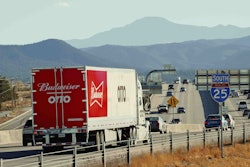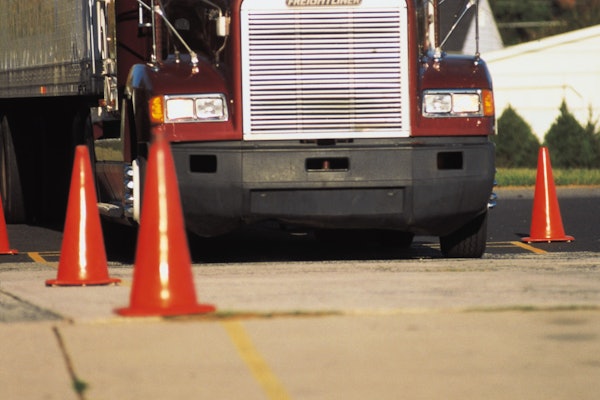Autonomous trucks are going to push truckers out of thousands of jobs!
Electronic logging devices will create thousands of job openings!
Well, does one trend compensate for the other?
 Autonomous trucks pose some threat to driver jobs, but other forces are increasing driver demand.
Autonomous trucks pose some threat to driver jobs, but other forces are increasing driver demand.On the first claim, most trucking insiders believe that change will be very incremental and relatively limited. That was the sense of a panel on autonomous trucking at the recent Truckload Carriers Association annual conference.
The driver’s role might well change, said panelist Mike Cammisa, an American Trucking Associations vice president. Nevertheless, “We still see drivers quite involved for the near future,” he said.
It’s no surprise that truckers and others in the industry have a keen appreciation for the potential problems of granting increasing amounts of autonomy to truck robotics. Many of those concerns were aired during a Federal Motor Carrier Safety Administration hearing last week, as reported by Senior Editor Todd Dills.
He followed up with the Senate’s Transportation, Housing and Urban Development subcommittee asking the Government Accountability Office to “examine the impact self-driving trucks will have on” truck drivers and their communities. That mirrors the somewhat inflated expectations typical outside of the industry. Progress from Google, Tesla and others with self-driving cars, including the occasional mention of Class 8 trucks, has fueled speculation that driverless big rigs are about to rule the highway.

Furthermore, broader concern about automation has become an issue du jour. National Public Radio’s recent series, “Robot-proof jobs,” used a McKinsey Global Institute study that analyzed more than 800 jobs. It concluded that heavy-duty truck driving jobs are 81 percent automatable.
However, the series also notes that if the skilled parts of your job aren’t automatable, your career has a future. With autonomous trucks, most trucking observers agree that outside of limited applications (drayage, platooning, etc.), drivers will be needed for many years to oversee duties that require experienced judgment.
As for the prediction that the ELD mandate will increase driver demand, it likely will. Some of those who’ve threatened to leave because of it will do so. Widespread ELD use will reduce productivity, requiring more drivers.
These effects of the ELD transition will fade, but that isn’t recruiters’ only problem.
The aging of the driver force, a longstanding trend, could be worsening. A report from HireRight found that among drivers leaving the industry in 2014, 22 percent were due to retirement. That rose to 33 percent in 2016.
It’s tougher than ever to replace retirees with younger drivers. HireRight found the average tenure for all drivers to be 4.6 years, but only two years for millennials.
Also, the use of the new medical registry for getting medical cards is likely screening out more drivers than before.
In an industry with 3 million driver jobs, those lost to automation in the near future will be hardly noticed. The factors screening out drivers are stronger and more immediate. For the foreseeable future, it should be a secure occupation.
But, hey, if you want some real security and prefer to stay close to trucking, the McKinsey report has a category that’s rated only 7 percent automatable. It includes “freight, stock and material movers, hand.” That would include the professionals we call lumpers.














